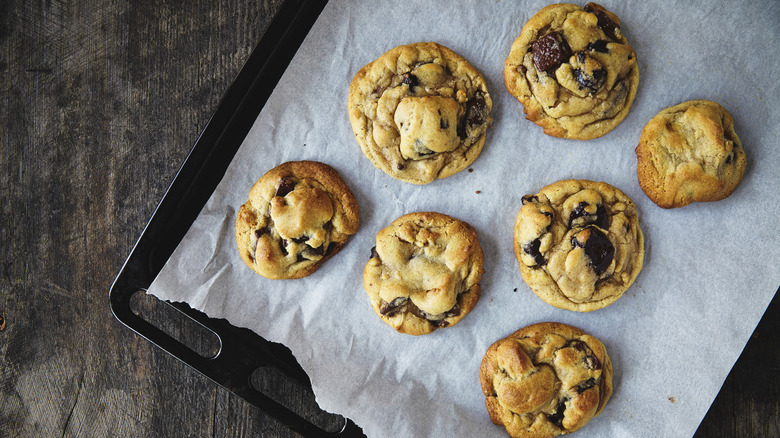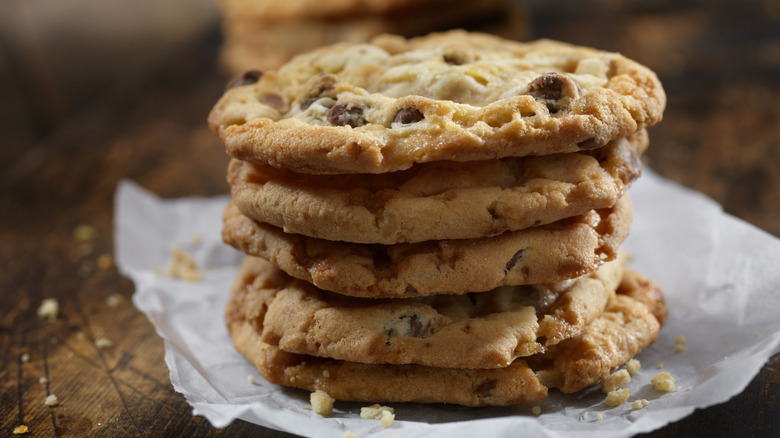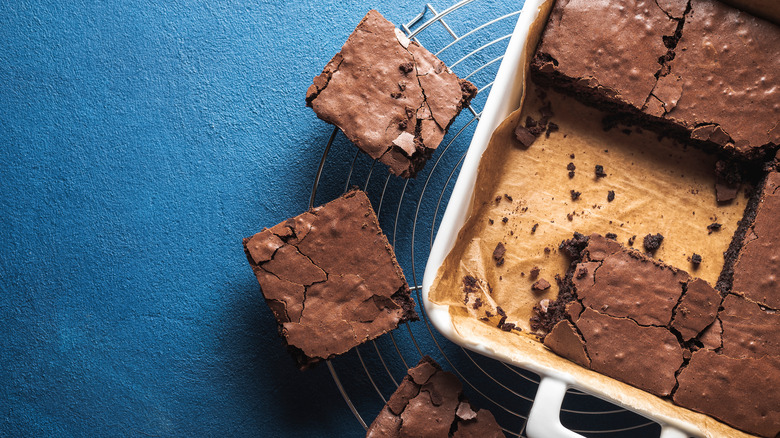How Banging Your Baking Sheet Leads To Better Cookies
If you've ever been told to bang a baking tray, it was probably in a recipe for macarons. This common baking technique is an essential step in making the French pastry because it releases air bubbles that often contribute to lumpy or cracked shells. Though pan banging is normally reserved for macarons, it can also improve the texture of any other type of cookie.
When you bake cookies, the addition of a leavening agent such as baking powder or baking soda produces gas and causes them to rise in the oven. This plays a major role in giving cookies their distinct cakey texture. Banging the pan, however, introduces two additional textures. It does so by causing air to escape, much like when you make macarons, and by interrupting the spreading process. As a result, the cookies develop crispy ripples along the edges, a gooey center, and a chewy — rather than cakey — texture.
The best way to bang your baking sheet
Whereas pan banging happens before baking if you're making macarons, when it comes to cookies, the process is a bit different. For starters, you'll need to roll the cookie dough into large balls and freeze them. You can then let them bake for 10 minutes before taking them out for the first round of banging. To do this, just smack your pan onto your counter from a height of about five inches. Repeat this process every two to three minutes until the edges are rippled to your liking.
For best results, avoid using a baking pan that's either too heavy or too light. A lighter pan might yield too flat of a cookie, while a heavier one won't create any rippling. A medium-weight one is best for pan banging, especially since it also promotes even baking. This will ensure you won't end up with over-browned bottoms.
Pan banging works on brownies too
The effects of pan banging aren't just limited to cookies. According to Ina Garten, the technique works just as well on brownies too, and as an added plus, you don't even have to bother taking them out of the oven. As the celebrity chef originally wrote in "The Barefoot Contessa Cookbook" all you have to do is let the brownies bake for 20 minutes, then give the pan a forceful tap against the oven rack. This is followed by 15 more minutes of baking before you can take them out of oven, Garten's recipe instructs.
Similar to when you pan bang cookies, pan banging brownies causes the baked good to slightly deflate. As a result of this, each brownie will develop a gooey interior and crispy exterior. Instead of ripples however, it'll get crinkly on top. Once you experience just how fudgy the resulting brownies are, you may never bake your brownies (or cookies) the same way again.


